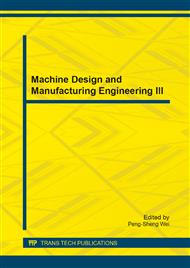p.612
p.616
p.620
p.625
p.629
p.633
p.641
p.647
p.651
The Study on PCCI Mode of Diesel Engine Fueled with Methanol/Dimethyl Ether
Abstract:
Taking into account China's abundant coal resources, methanol and DME(Dimethyl Ether) obtained from coal are good alternative fuels. The research project is to utilize the fuel of DME and methanol in diesel engines for new combustion models PCCI (Premixed Charge Compression Ignition).The tests of the PCCI mode with different boundary conditions were studied on PCCI test bench. PCCI combustion is consisted of three stages: low temperature reaction of DME, high-temperature reaction of DME and diffusion combustion reaction of methanol. DME as combustion improver should be kept relatively low concentration, and with the decrease of methanol, its concentration need to be reduced. Methanol and formaldehyde are important parts of HC emission, their volume fraction was about 70%.
Info:
Periodical:
Pages:
629-632
Citation:
Online since:
July 2014
Authors:
Keywords:
Price:
Сopyright:
© 2014 Trans Tech Publications Ltd. All Rights Reserved
Share:
Citation:


